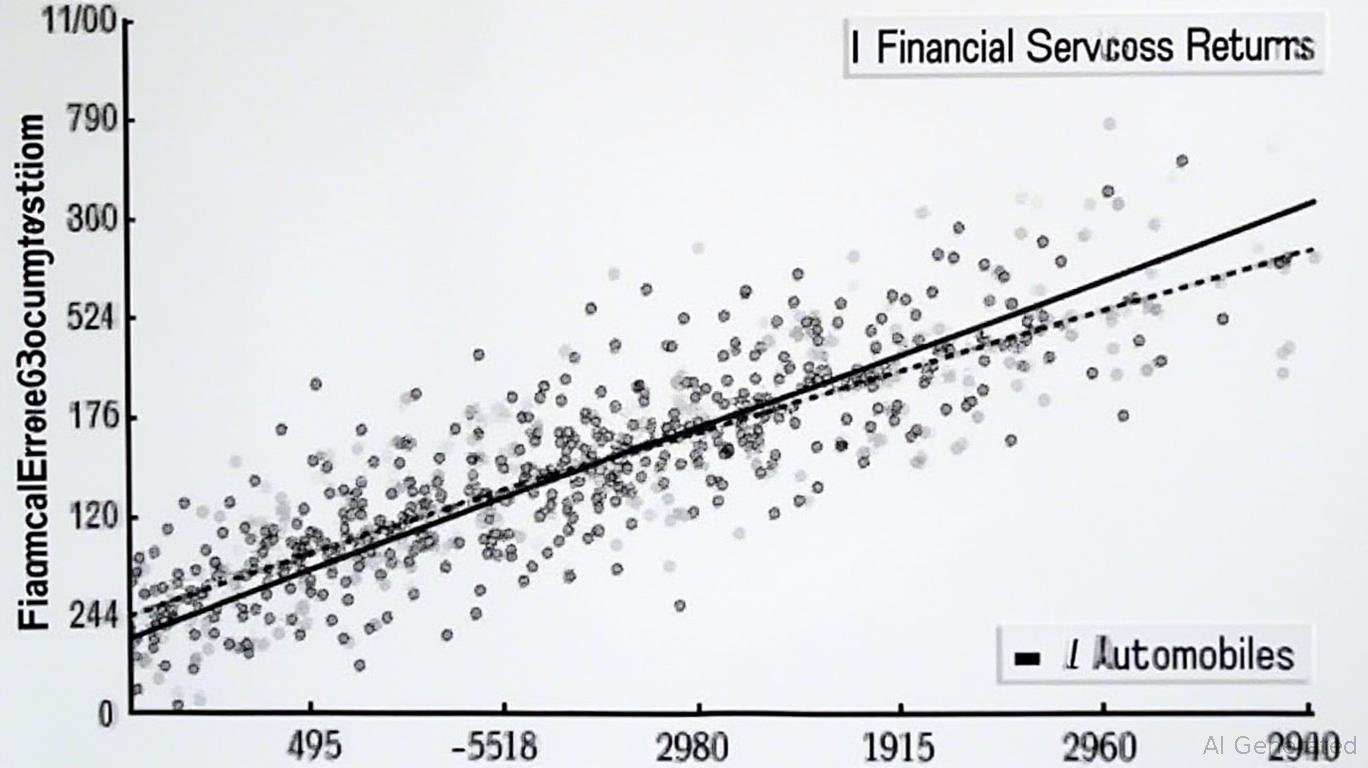AInvest Newsletter
Daily stocks & crypto headlines, free to your inbox
The recent sub-forecast U.S. Core CPI reading in March 2025—2.8% annually, below the 3.0% expectation—has reignited debates about the Federal Reserve's policy path and its asymmetric impact on sectors. This divergence between inflation data and market expectations creates a critical
for investors, particularly in Financial Services and Automobiles, whose fortunes are inextricably tied to monetary policy and macroeconomic trends. A deep dive into historical backtests and sector dynamics reveals a clear playbook for tactical shifts.The Fed's primary mandate—price stability and full employment—has long hinged on inflation signals. When Core CPI (excluding volatile food and energy) undershoots forecasts, as it did in March and February 2025, it reduces the urgency for aggressive rate hikes. This creates a sweet spot for sectors sensitive to interest rates, such as Financial Services, while exposing demand-driven sectors like Automobiles to risks tied to economic softness.

Financial Services, particularly banks and insurers, benefit from lower inflation surprises because they reduce the likelihood of prolonged high rates or restrictive policies. Lower rate hike expectations boost bank margins (as short-term rates decline) and stabilize insurance premiums tied to inflation. For instance, in March 2025, the motor vehicle insurance index rose by 6.1% annually, reflecting steady demand amid stable pricing power.
Conversely, Automobiles face dual pressures:
1. Demand Vulnerability: Slower inflation often coincides with weakening consumer spending, especially in discretionary categories like vehicles.
2. Inventory Risks: The Used Cars & Trucks index fell by -0.7% month-over-month in June 2025, signaling oversupply.
Financials outperformed Autos by 14% over the next six months as the Fed cut rates to zero.
2023's Inflation Moderation:
Financials rose 8%, while Autos declined 5% as rate cuts became priced in.
2025's Sub-Forecast Readings:
The Fed's flexible average inflation targeting framework, introduced in 2020, prioritizes longer-term stability over short-term volatility. Recent comments from policymakers emphasize data dependence, with Core CPI's shelter and services components (which make up 60% of the index) under scrutiny.
Insurers (e.g., AIG, ALL) gain from lower inflation-driven claims.
Underweight Autos:
Avoid ITA and focus on defensive plays like auto parts suppliers (e.g., APD, ARNA) with exposure to repair demand.
Monitor CPI Components:
The U.S. Core CPI's sub-forecast readings are not just statistical anomalies but strategic signals for sector rotation. Financials thrive in environments where inflation moderation eases Fed hawkishness, while Automobiles face headwinds tied to both pricing pressures and demand cycles. Investors ignoring this divergence risk missing out on asymmetric returns. As the Fed's focus narrows to sustainable inflation, portfolios must tilt toward sectors that benefit from policy easing—and away from those vulnerable to its flip side.
Stay data-driven. Stay nimble.
Dive into the heart of global finance with Epic Events Finance.

Oct.14 2025

Oct.14 2025

Oct.14 2025

Oct.13 2025

Oct.13 2025
By continuing, I agree to the
Market Data Terms of Service and Privacy Statement
Daily stocks & crypto headlines, free to your inbox
Comments
No comments yet